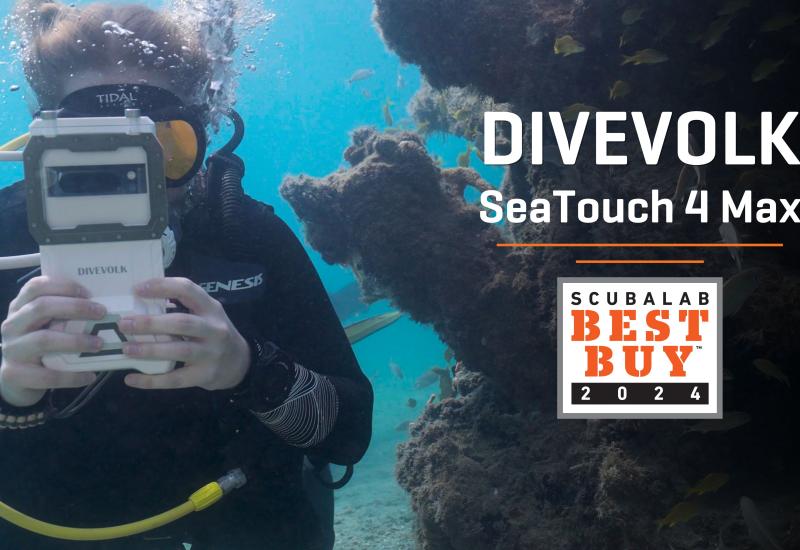Breaking Down 4 Trends in Dive Mask Design
For ScubaLab's 2018 dive mask review (which you can read right here), our team of test divers evaluated 24 new masks in all. With so many masks to test, we naturally got plenty of face time with masks of all different shapes, sizes and designs. Here are a couple trends we noticed with this new class of masks: color variation, strap options, new case designs and wide fields of view.
Does the Color of Your Dive Mask's Skirt Matter?

Jon WhittleThe Cressi Calibro features a clear skirt
To the old standards of black or clear mask skirts, you can now add nearly every shade of the rainbow. Some of the masks in our 2018 ScubaLab mask test are available in more than a dozen colors, including orange, lime green and purple.
Leaving aside the aesthetics of nontraditional colors (a contentious issue among divers we know), the type of skirt — transparent or opaque, black or white — can make a big difference in your vision and perception. What works best can depend on dive and light conditions as well as personal preference.
Skirts of clear silicone — transparent or frosted — can extend peripheral vision (especially for motion, the first thing your eye picks up) and let in maximum light. That can be a plus for divers who prefer an open, airy feeling and maximum peripheral vision. But it can be too much in bright sun and shallow, clear water, where glare or reflection off the lens can reduce your vision.
Black or dark skirts are preferred by some divers because they reduce glare to a minimum (one reason many photographers prefer them). But some divers find their view too dark or restrictive, even claustrophobic.
A compromise option might be white or lightly colored skirts, which cut glare by blocking light from the sides but still give a brighter view.
Elastic Straps vs. Silicone Straps

Jon WhittleThe Zeagle Scope, shown with its wide elastic strap
Some new dive masks look like they’ve just come from the ski slopes, with wide elastic straps replacing the traditional silicone. Increasingly, masks offer user-replaceable options of silicone or elastic (including the Zeagle Scope and Scubapro Zoom EVO in our test).
One difference with an elastic strap is the buckles usually take a little fussing around to get them where you want. But elastic straps also are stretchier than silicone, so you can adjust the buckles once and leave them where they are.

Jon WhittleThe Sherwood Scuba Scope's snorkel holder
Elastic straps typically don’t have split sections at the back to help them stay in place the way silicone ones do. Instead they use thin beads of silicone embedded on the strap where it contacts the head to keep from sliding around. Some also have loops for holding snorkels (like the Sherwood Scuba Scope), since not all standard keepers will fit the wider elastic straps.
Depending on the buckle system, elastic straps can be less likely to tangle in hair, and some find they hold a mask in place with less pressure than silicone. If you shop for an elastic-strap mask, look for buckles that stay put and sit comfortably on your head, and check that the strap doesn’t rub on your ears, since elastic usually offers less up-and-down adjustment in the strap.
Protective Cases

Jon WhittleThe Zeagle Scope Dual's form-fitting box
The best way to protect your mask is to put it in its case when it’s not on your face. Most boxes that come with masks provide adequate protection, but some go a step further. For example, Indigo Industries’ rugged mask box features secure latches that hold it closed. And Zeagle’s box has a mask-hugging shape that prevents the cargo from rattling around.
Wide Field of View

Jon WhittleThe TUSA Freedom Tri-Quest's domed side windows
Really big lenses, like the jumbo front screen with side windows on the Tusa Freedom Tri-Quest, or the Zeagle Scope Dual, are one element of providing a mask with the widest possible field of view. But just as important is a skirt design and shape that bring the lenses as close to the face as possible. That’s because field of view is affected not just by lens size, but also their proximity to your eyes.










